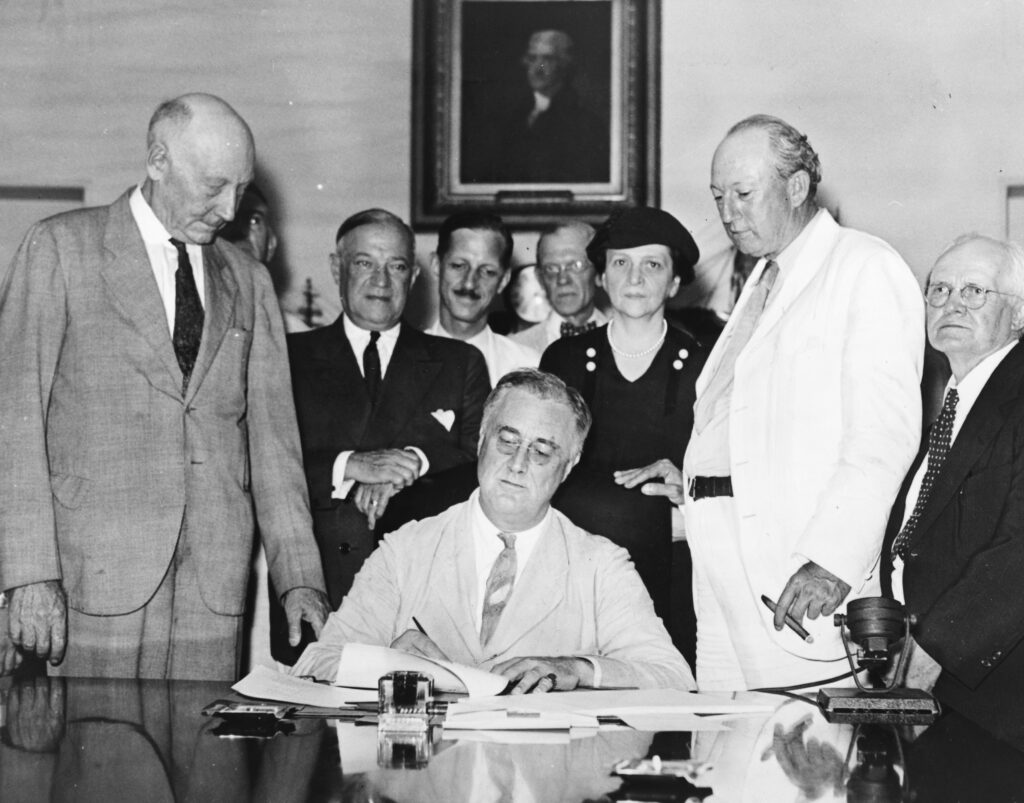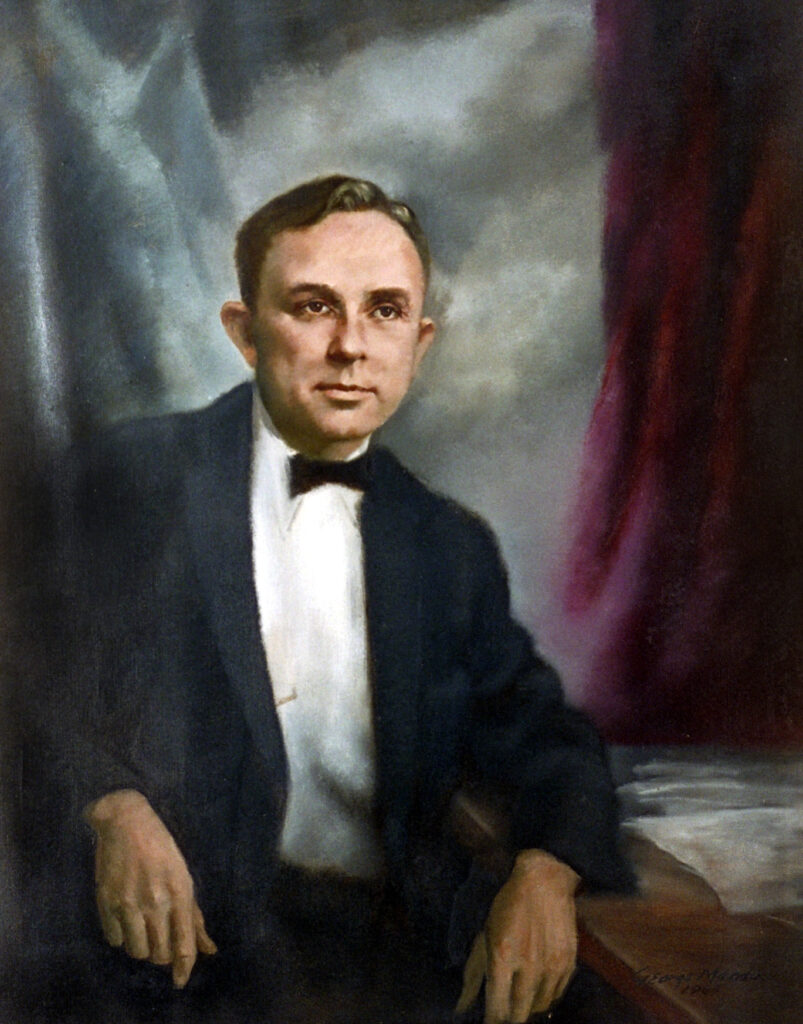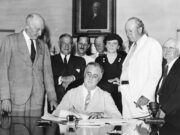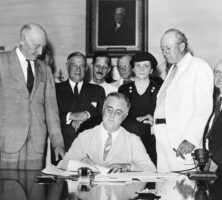The Social Security Act (SSA) was signed into law by U.S. president Franklin D. Roosevelt on August 14, 1935. The law was one of Roosevelt’s major New Deal initiatives during the Great Depression. Best known today for providing retirement benefits to most workers, the Social Security Act of 1935 also provided grants for unemployment insurance, dependent children, and state public health initiatives. The law has been expanded, modified, and amended dozens of times since 1935—notably with the inclusion of Medicare and Medicaid in 1965, and most recently in 2009 and 2012.
Programs and Funding
Roosevelt described the SSA as a “comprehensive package of protection” against the “hazards and vicissitudes of life” when he signed the act in 1935. While the Social Security Act of 1935 fell somewhat sort of that lofty goal—medical benefits and protection against disability weren’t added until later—the SSA did establish multiple government programs that helped provide economic security for millions of Americans.

Courtesy of Library of Congress, Prints and Photographs Division
The SSA is best known for programs that aid the elderly. Title II of the SSA, “Federal Old-Age Benefits,” created the social insurance program, commonly referred to as “Social Security.” Title II pays workers after they retire at age sixty-five. Social security payments are not, and were never meant to be, retired workers’ only source of income. Today social security pays about 40 percent of the average worker’s income. (Most economists estimate that retired workers need to earn 70 percent of the average worker’s income in order to live comfortably.) In addition to social security, retired workers are expected to live off private pensions, savings, and investments.
The SSA didn’t only pay benefits to the elderly, however. Dependent children—children under the age of sixteen who had lost a parent and were living with relatives—also received money from social security. In 1940 more than 54,000 children received aid from social security, and the SSA also distributed money to workers who had become unemployed or disabled.
The SSA is a “pay as you go” program. The Social Security Act of 1935 was funded by a payroll tax split evenly between workers and employers. Today the tax is 12.4 percent of the worker’s earnings—half of that amount is taken out of the worker’s paycheck and half is paid by the employer. These taxes are then put into a trust fund that is distributed to social security beneficiaries, including retirees and dependent children.
Criticism and Changes
The SSA was a controversial law from its beginning. Georgia governor Eugene Talmadge initially rejected social security funding, at one point telling the Georgia General Assembly that the adoption of an old age pension would be “another step towards destruction.” Talmadge was a strong believer in laissez-faire governance, and he opposed most social welfare programs. The SSA required states to set up agencies that would distribute federal money, but Talmadge blocked state legislators’ measures to establish such an agency. This move was deeply unpopular—every U.S. congressman and senator from Georgia had voted for the SSA. Talmadge’s rejection of social security was a major reason that E. D. Rivers, an avid New Deal supporter, won the gubernatorial election of 1936.

Courtesy of Atlanta History Center.
Talmadge was not the only critic of the SSA. Conservative lawmakers, especially southern ones, accused the law of socialism, and the tax mechanism at the center of the law narrowly survived two different U.S. Supreme Court challenges in 1937. The law’s unemployment insurance also excluded many professions that were dominated by women and people of color. Speaking to the latter, Charles Houston, an NAACP official, criticized the law as “a sieve with holes just big enough for the majority of negroes to fall through.”
In 1939 the SSA was amended to include “dependents’ benefits” and “survivors’ benefits,” which are, respectively, benefits that are paid to the spouse and children of retiring workers, and benefits that are paid to the spouse and children of workers who have died before they could collect social security. Benefit amounts were also increased generally.

Courtesy of Georgia Capitol Museum, University of Georgia Libraries
The first monthly retirement check was received by Ida May Fuller of Ludlow, Vermont, in January 1940. She started collecting benefits at age 65 and lived to be 100 years old, dying in 1975. The current Social Security Administration, whose precursor was established by the Social Security Act of 1935, has expanded to operate nearly a dozen social welfare programs, including Medicare, Medicaid, and the Supplemental Security Income program. Between 1937 and 2009 social security programs (excluding Medicare and Medicaid) have taken in $13.8 trillion in income and expended $11.3 trillion in payments.






